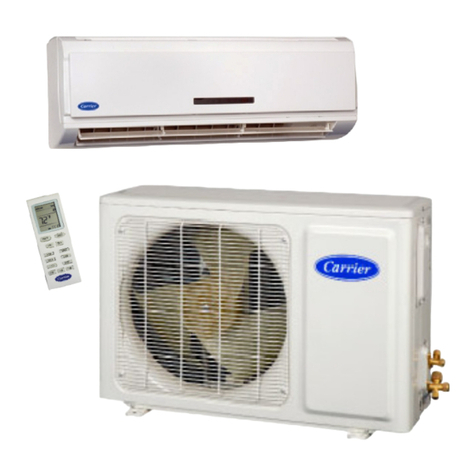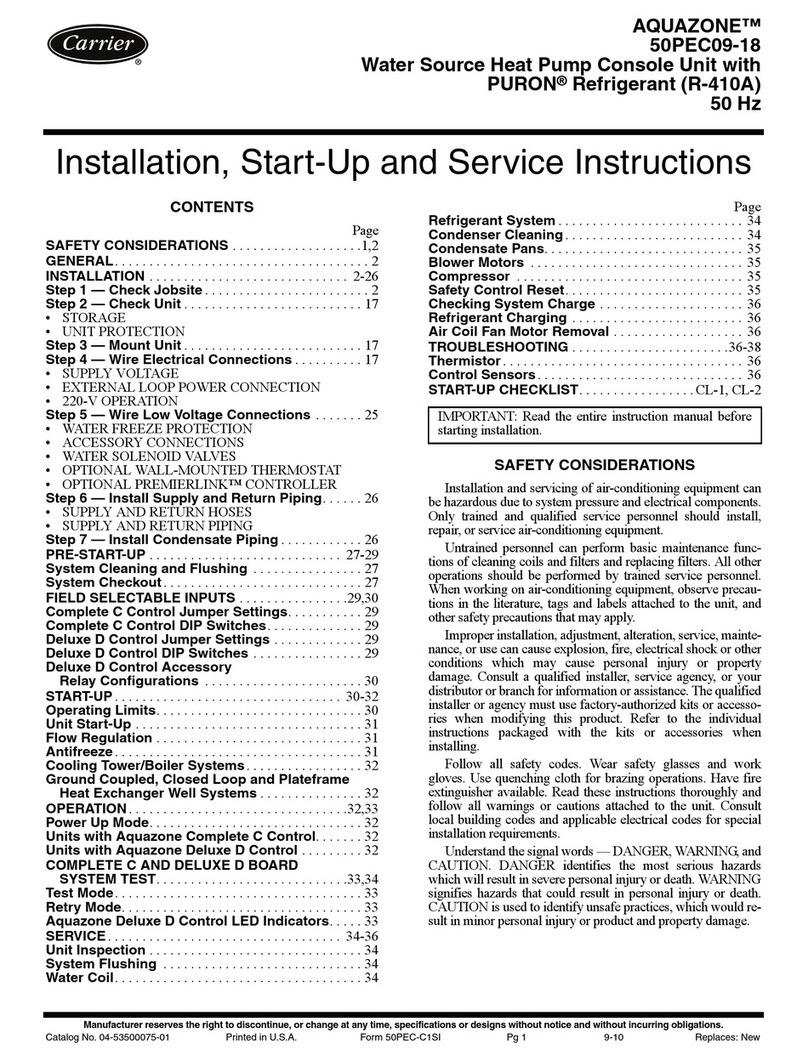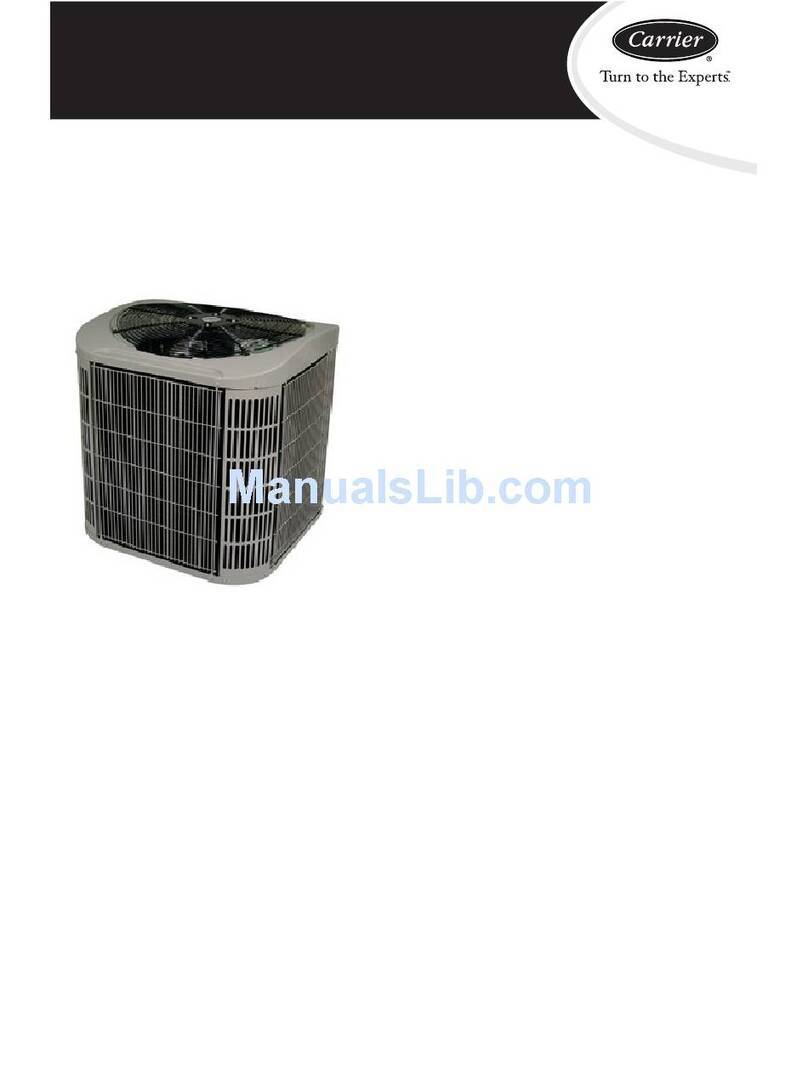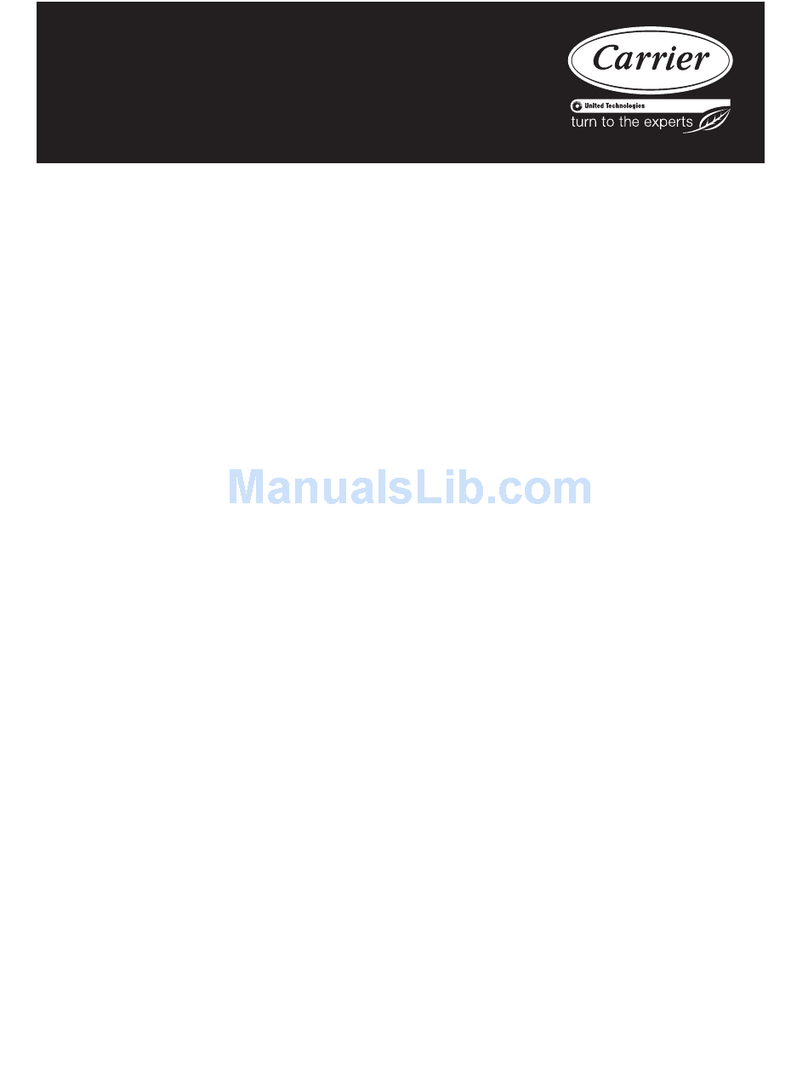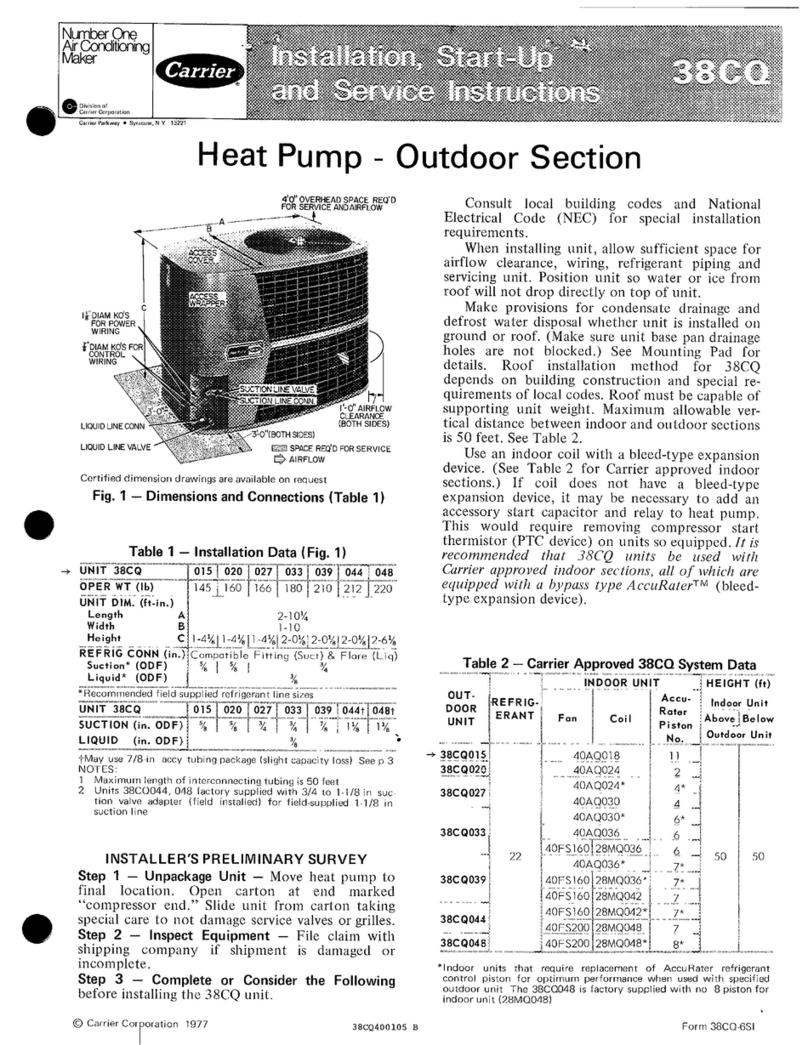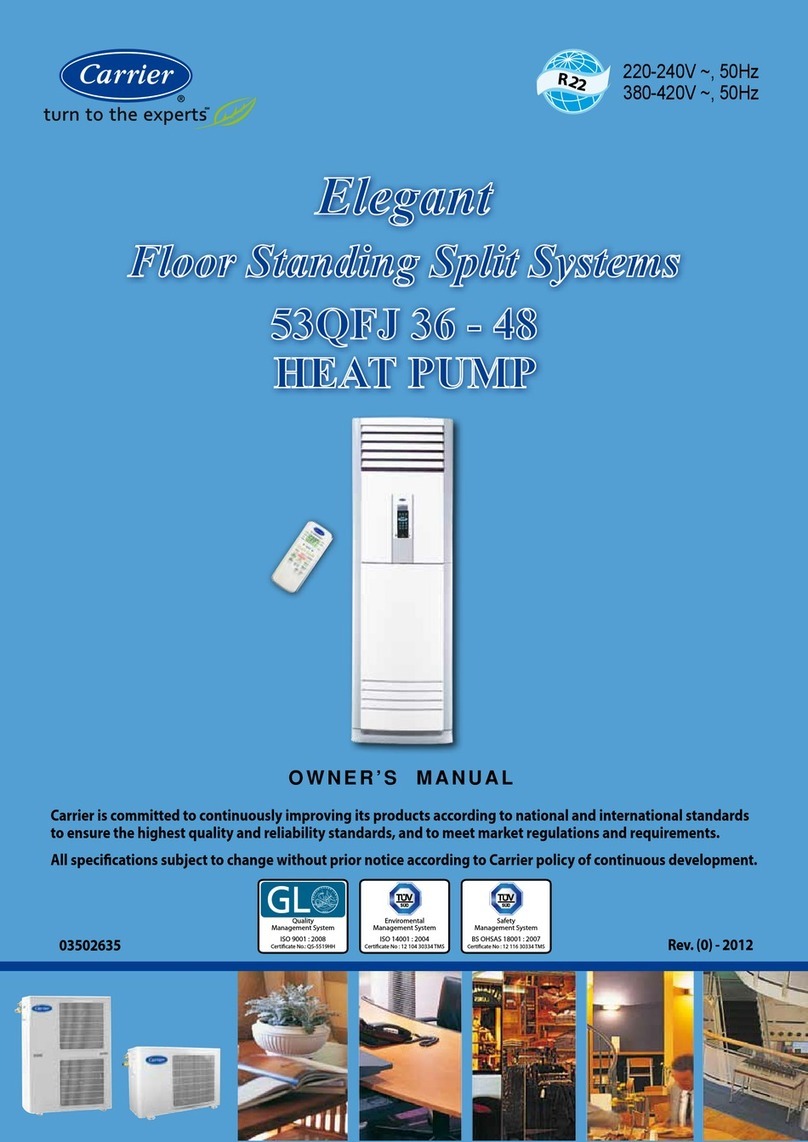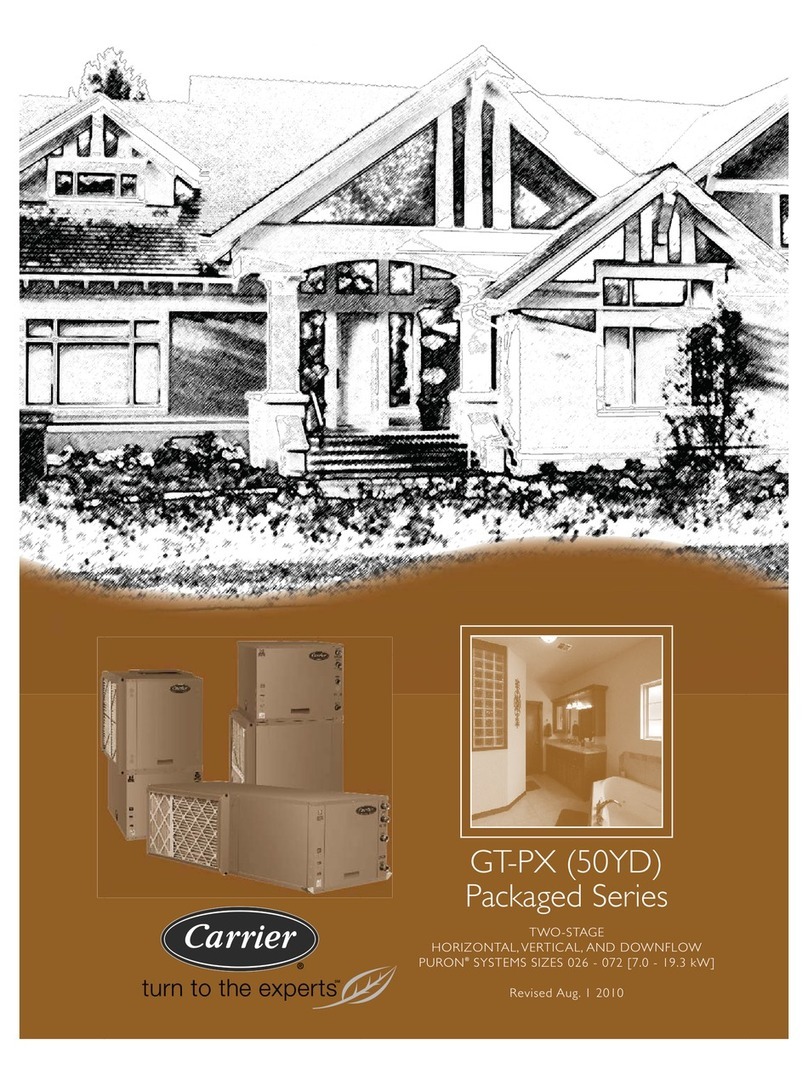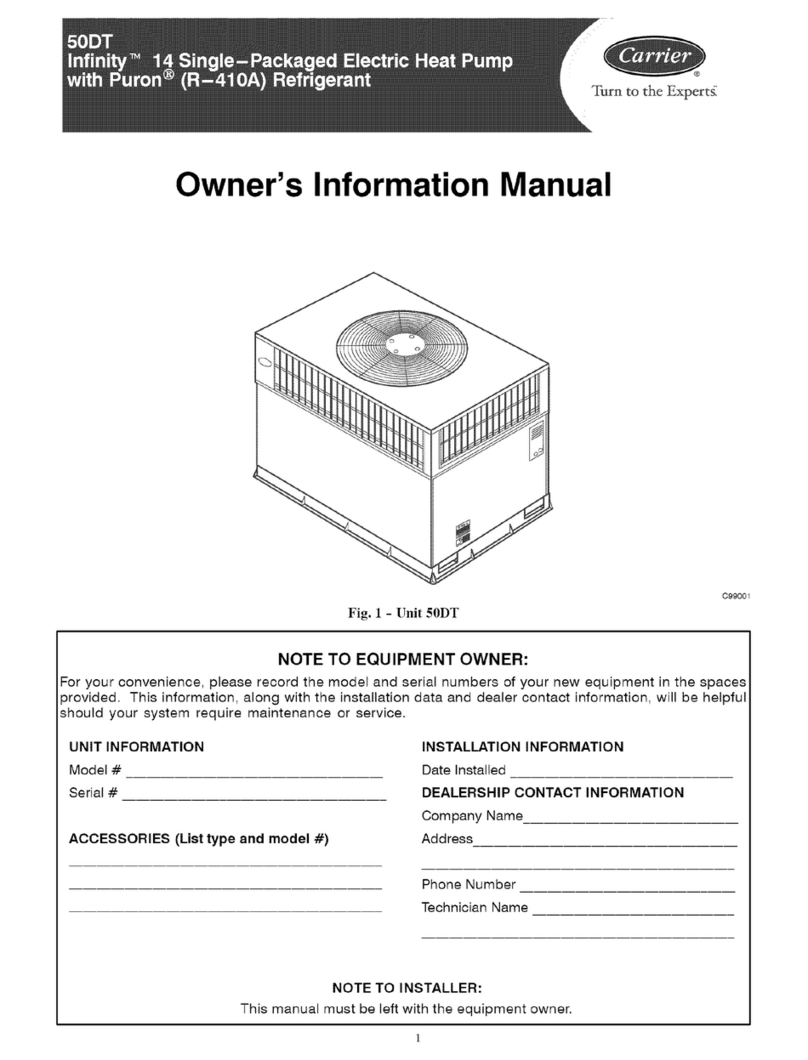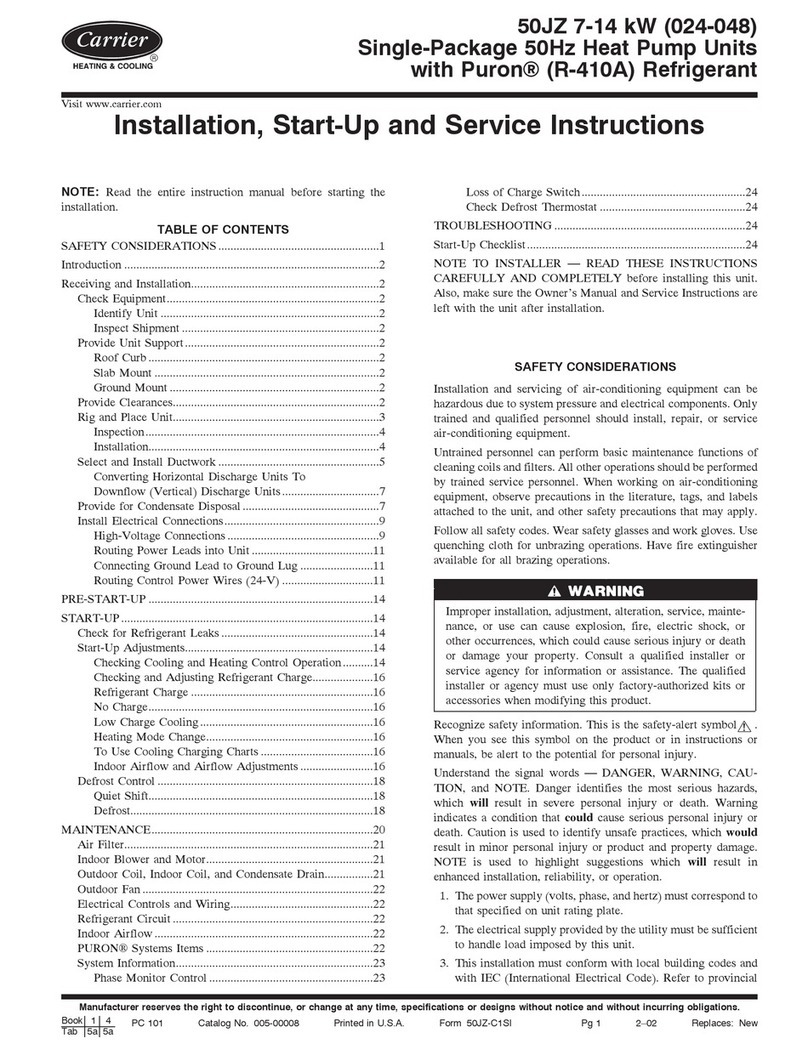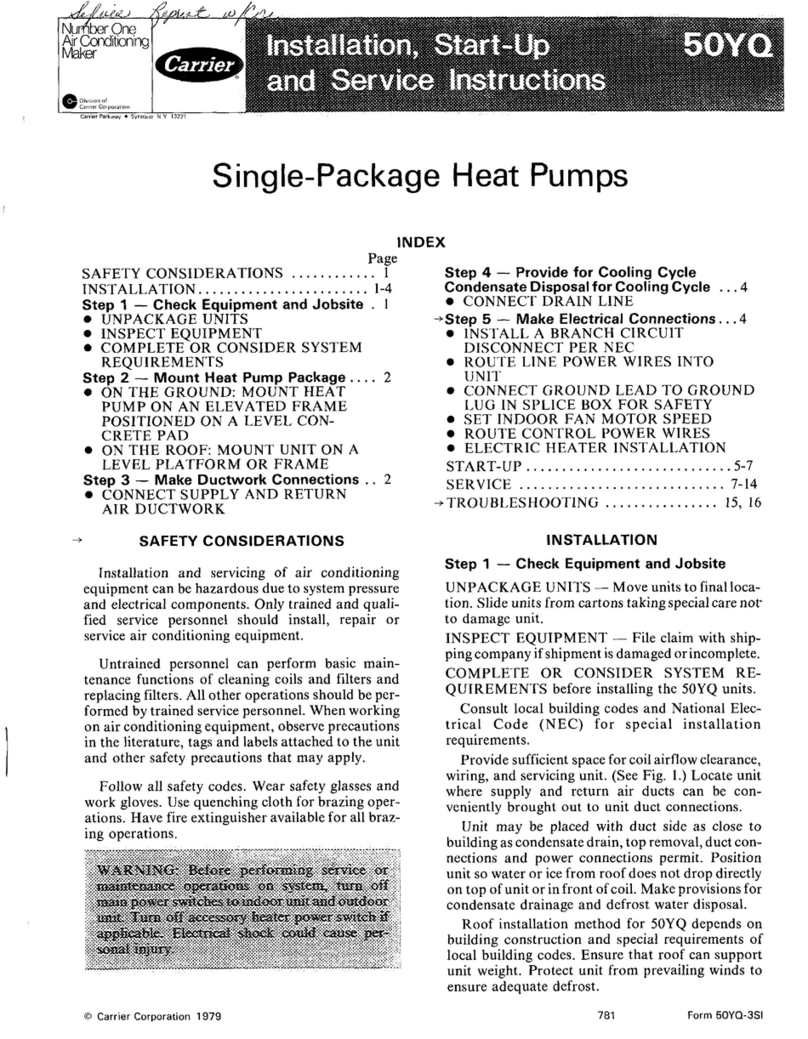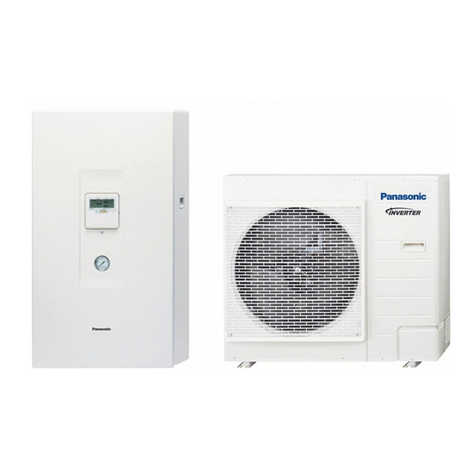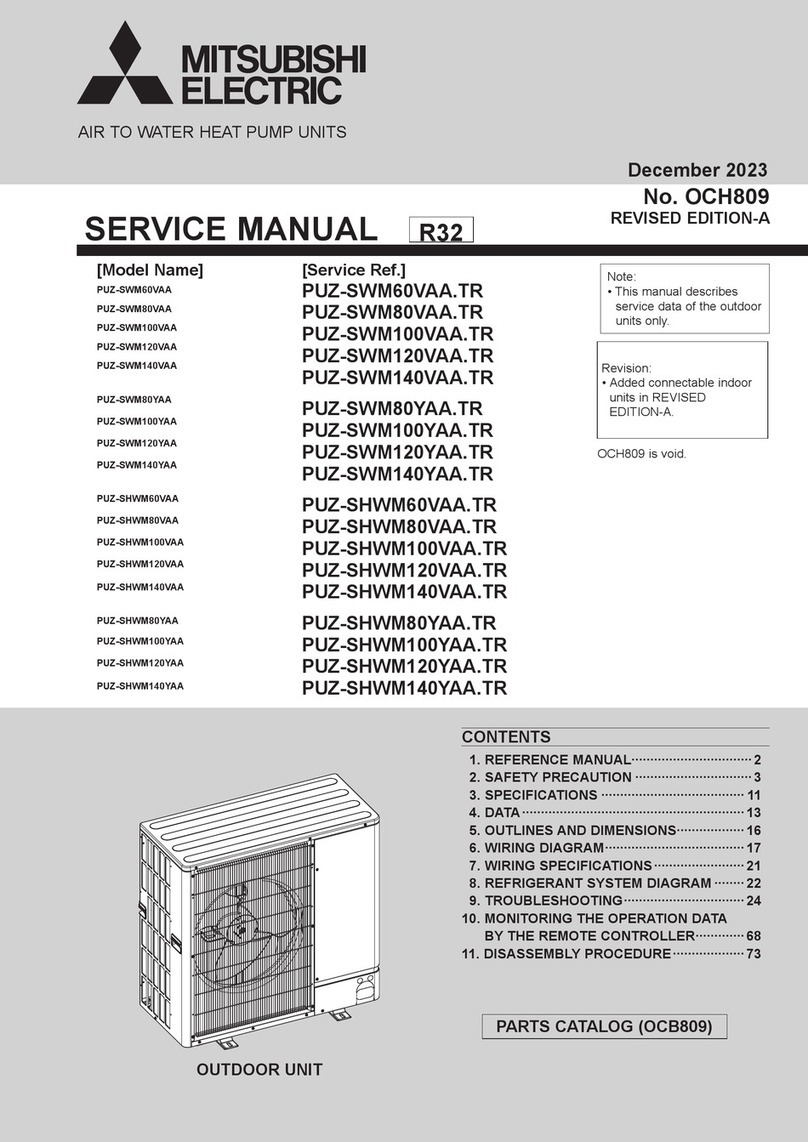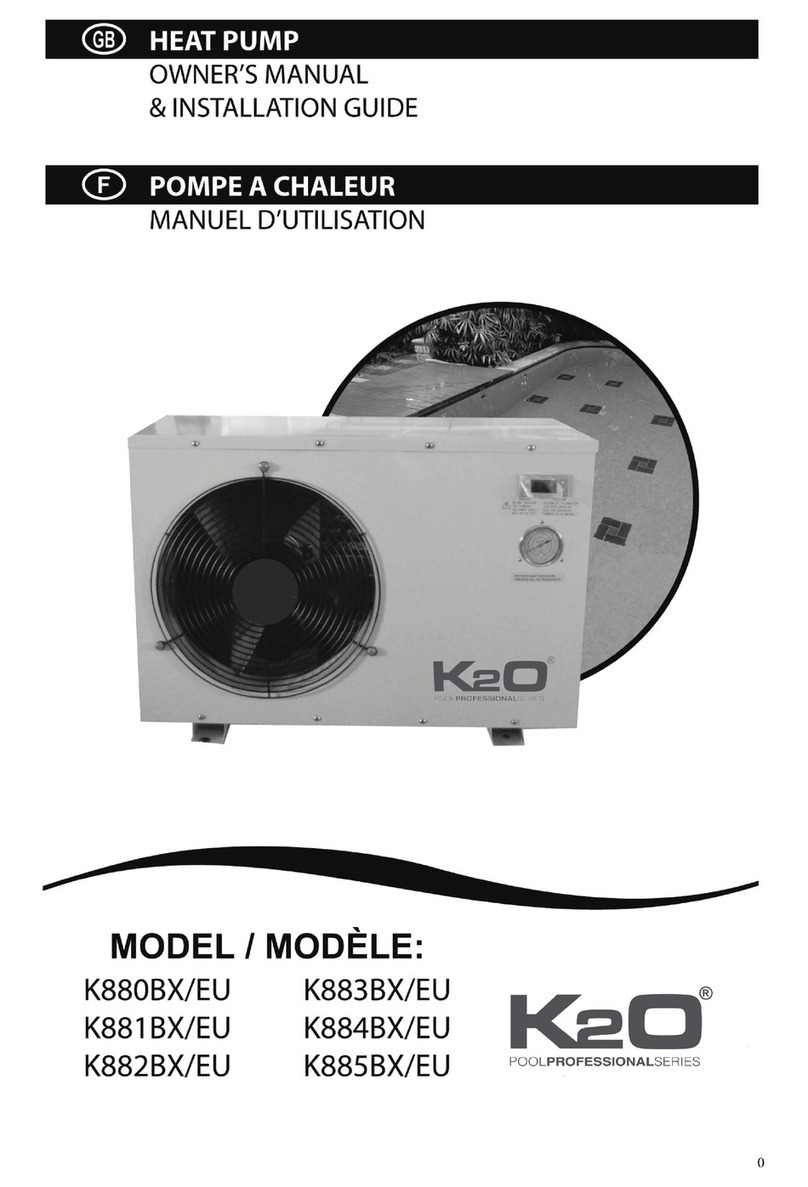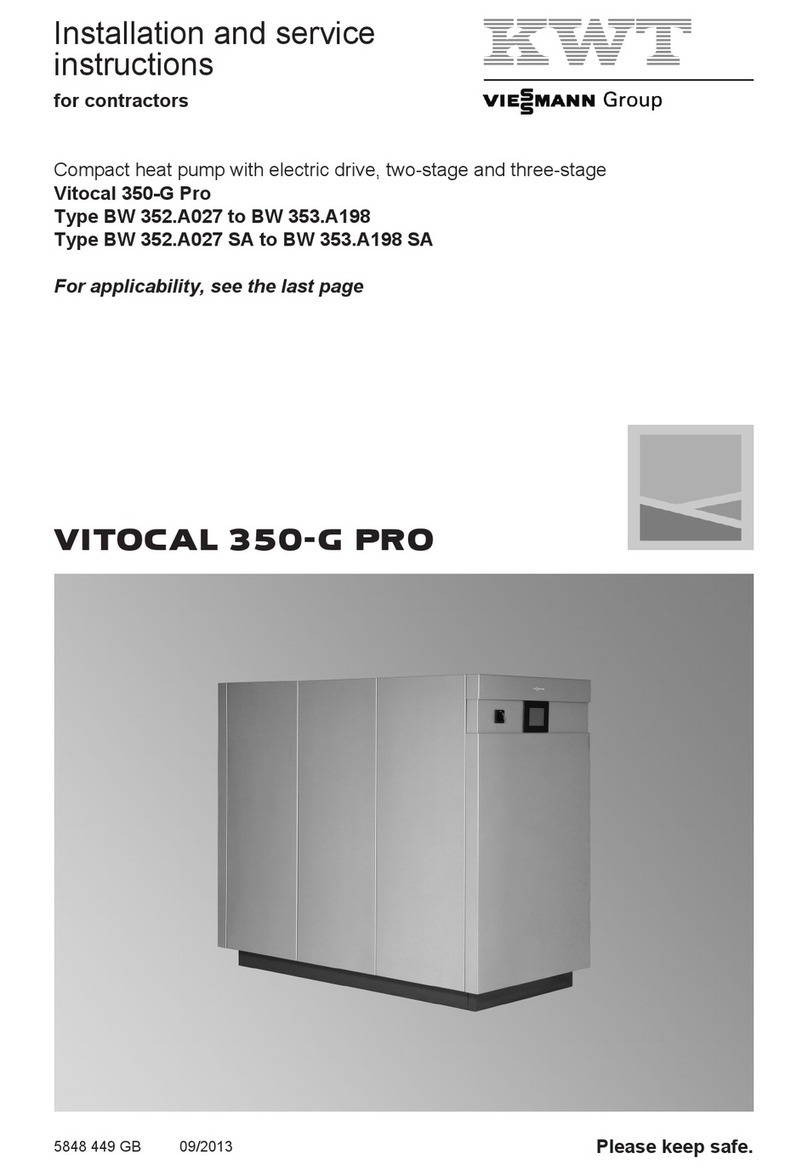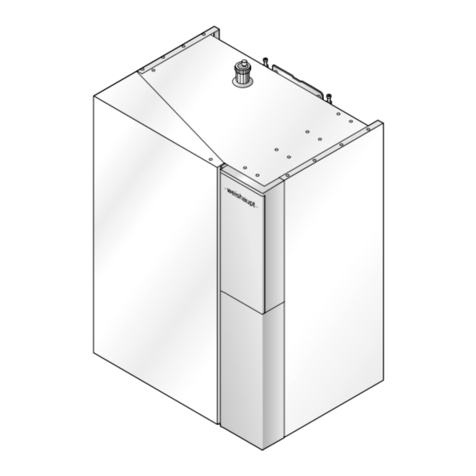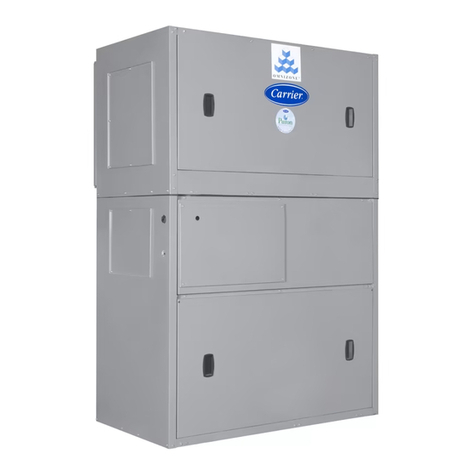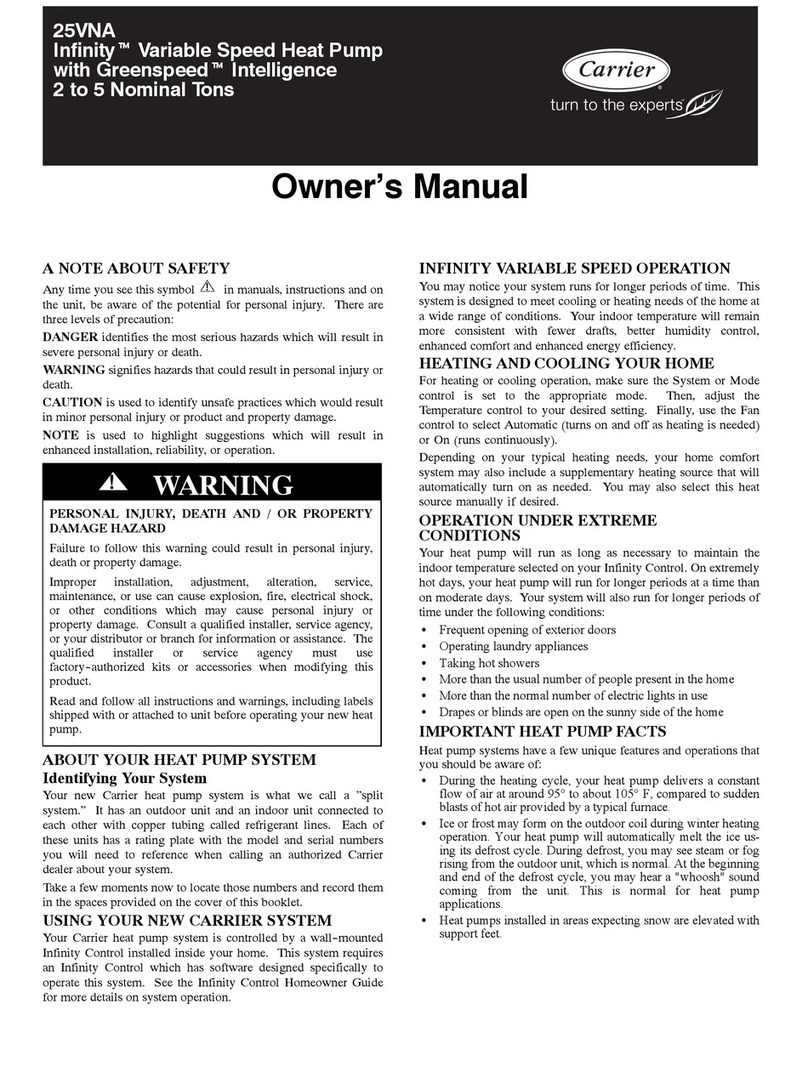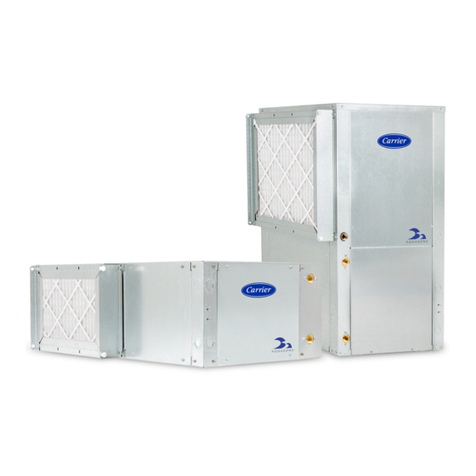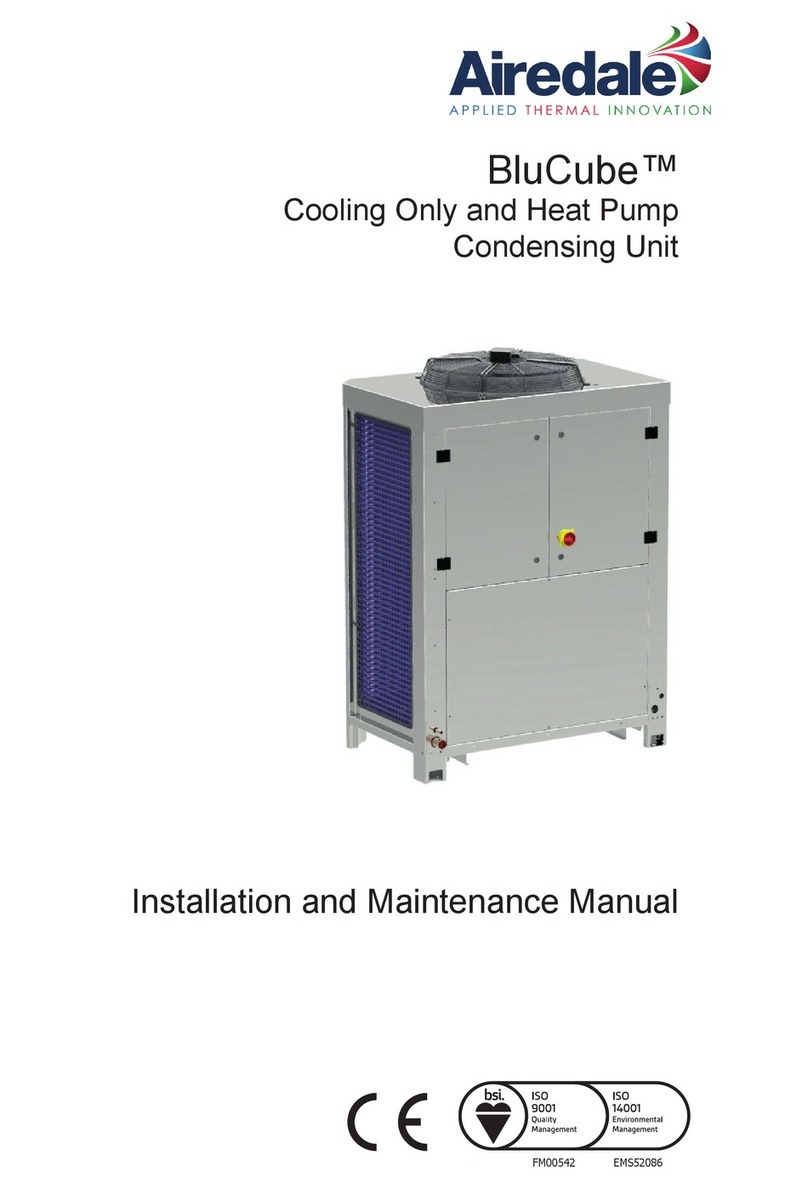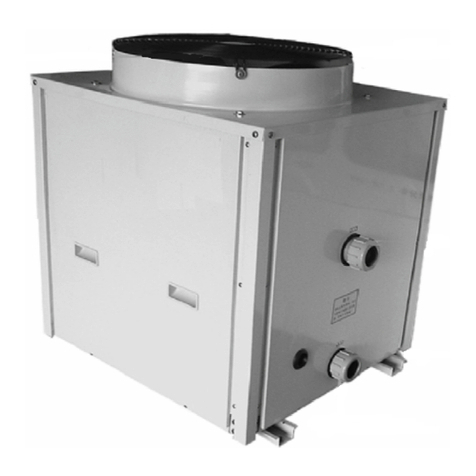Installing the Indoor Unit Body to the Wall Hanging
Bracket
1. Pass the pipes through the wall sleeve and then hook the
indoor unit body on top of the wall hanging bracket.
2. For left-hand piping, bang the unit on top of the wall
hanging bracket and incline the unit using a tool such as a
screwdriver set between the middle area of the body and
bottom right of the wall hanging bracket. Connecting the
pipe can be done more easily if the unit is inclined.
3. F-LXthe bottom part of the unit to the wall hanging bracket
by pushing it carefully until the two bracket hooks fit into
the marked places at the base of the unit until it snaps into
place. Refer to Fig. 13.
NOTE:
Do not crush or kink the indoor piping. Avoid sharp bends
with a bend radius of less than 4 inches.
Do not over bend the same part of the pipe frequently.
•Do not remove the flare nut from the indoor unit pipe until
the piping is connected.
through a wall, seal the opening so that vibration is not transmit-
ted to structure. Leave some slack in refrigerant tubes between
structure and outdoor unit to absorb vibration.
MAKE PIPING SWEAT CONNECTIONS -- Remove plas-
tic caps from liquid and suction service valves. Use refrigerant
grade tubing.
Position tube end downward and cut the tube to the request-
ed length. Remove the burrs with a reamer. See Fig. 14.
NOTE: Oil in the compressor is extremely susceptible to mois-
ture absorption. Keep ends of tubing sealed during installation.
Remove flare nuts from the unit connections and place them
on the tube end. Flare the tube with the flaring tool. The flare
end must not have any burrs or imperfections. The length of the
flared walls must be uniform. See Fig. 15.
Lubricate the tube end and thread of the flare fitting with
antifreeze oil. "tighten the fitting several turns, then tighten it
fully with two wrenches by applying the tightening torque indi-
cated in Table 4 and Fig. 16.
Hole
?
/
!
/
/
Insufficient tightening torque will cause gas leaks. Over-
tightening the fittings will damage the tube flaring and
cause gas leaks. Equipment damage and personal injury
may result.
NOTE: Unit is shipped with R-410A factory charge indicated
on nameplate.
AIR PURGING AND LEAK TEST -- Only use a vacuum
pump to purge air from the piping. Refer to Fig. 17.
IMPORTANT." Do not use the system compressor as a
vacuum pump.
IMPORTANT: Do not use the unit refrigerant gas to purge I
the connecting pipes. I
Retainer Retainer
Clip Clip
]LIfL _lrl.
Fig. 13- Wall Hanging Details
OUTDOOR UNITS- Outdoor units may be connected to
indoor units using field-supplied tubing of refrigerant grade
and condition. See Table 3A for correct line sizes. Do not use
less than 10 ft of interconnecting tubing.
DO NOT BURY MORE THAN 36 IN. OF REFRIGER-
ANT PIPE IN THE GROUND. If any section of pipe is
buried, there must be a 6-in. vertical rise to the valve
connections on the outdoor unit. If more than die
recommended length is buried, refrigerant may migrate to
cooler, buried section during extended periods of system
shutdown. This causes refrigerant slugging and could
possibly damage the compressor at start-up.
If either refrigerant tubing or indoor coil is exposed to
the atmosphere, the system must be evacuated following good
refrigeration practices.
Run refrigerant tubes as directly as possible, avoiding
unnecessary turns and bends. Suspend refrigerant tubes so they
do not damage insulation on vapor tube and do not transmit
vibration to structure. Also, when passing refrigerant tubes
Remove the caps from the valves. Create a vacuum with a
vacuum pump connected to the ser-(lce connection of the
suction shut-off valves completely shut until a 50 Pa vacuum
has been reached.
Open the mixed phase valve for 3 seconds, then quickly
shut it to check for possible leaks.
Replace caps and check for leaks using a leak detector
spe(lfiC for R-410A refrigerant.
After the leak test, fully open the three-way valves.
Table 4 -- Tightening Torque
VALVE SIZE FLARE NUT (in.-Ib)
1/4in. 159
s/sin. 372
112in. 487
Fig. 14- Removing Burrs

